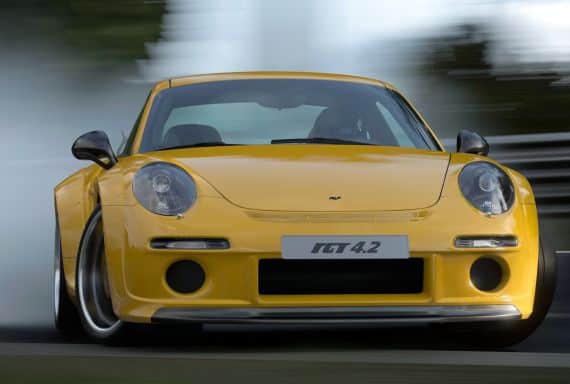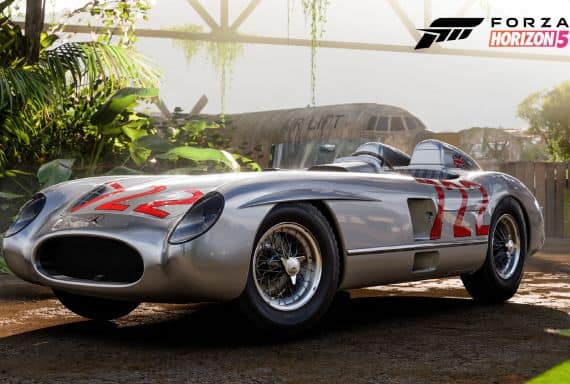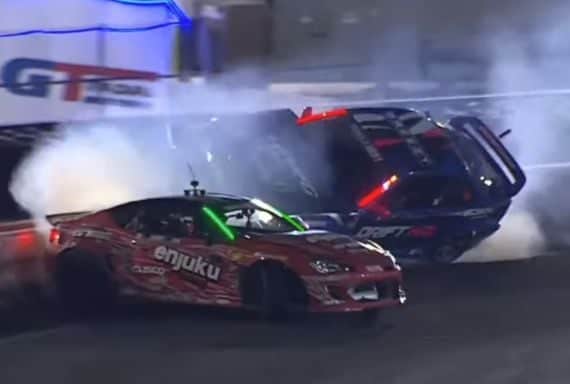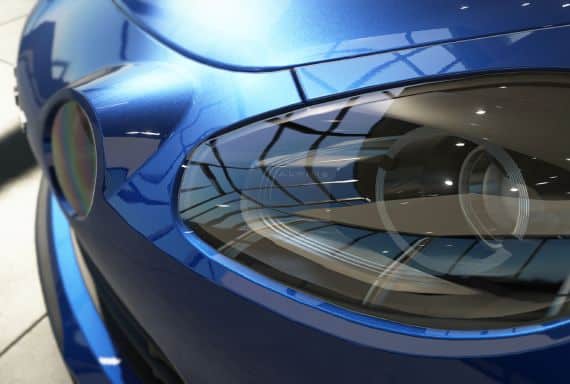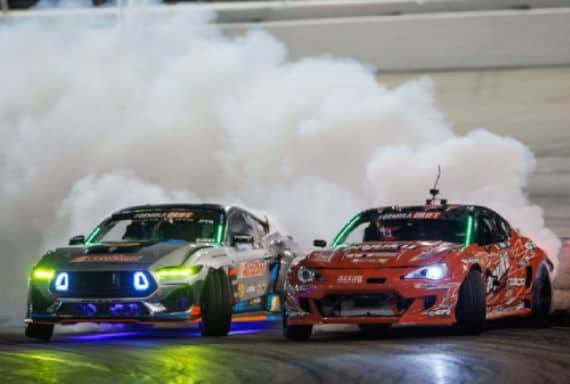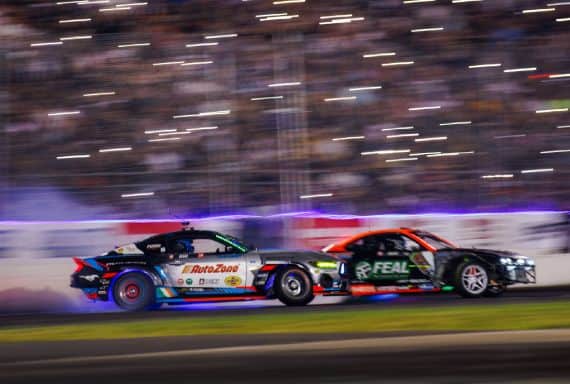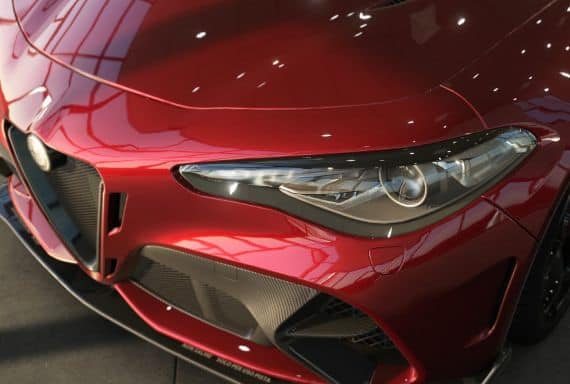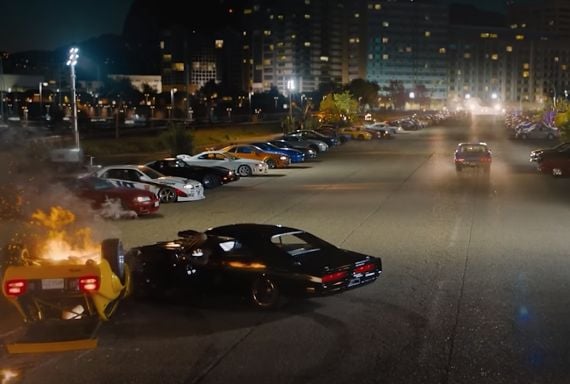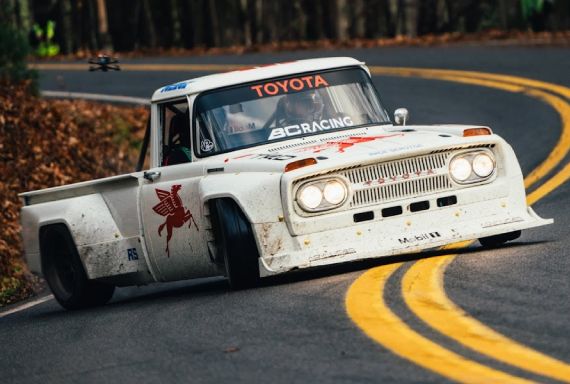Is The Fox Body Mustang A Muscle Car Bargain?
We dive under the hood of the Fox Body Mustang to find out if this boxy classic is the muscle car bargain of 2019.
- Fox Body Mustangs in the media
- It started in the ’70s
- Fox Body Mustangs in the ’80s
- 90s: The final generation
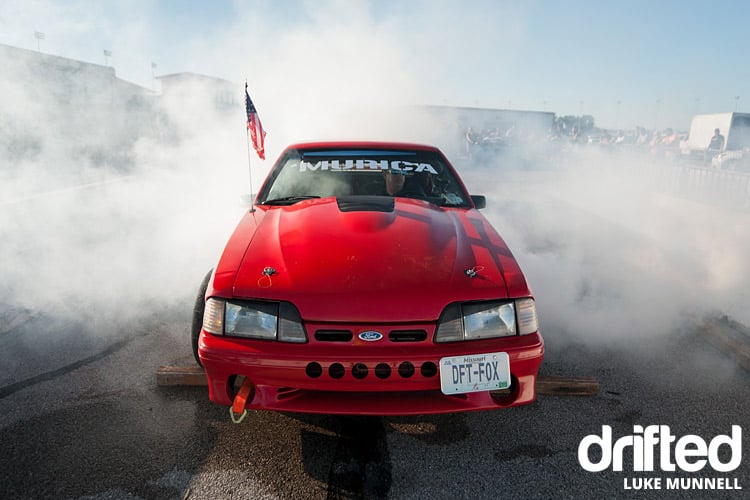
In a hurry? Let’s take a look at Fox Body Mustangs in the media:
Fox Body Mustangs in the media
Hilarious YouTuber – Regular Car Reviews takes a first drive, point of view review of the Fox Body Mustang.
Matt Farah from The Smoking Tyre puts this LS1 IRS swapped Fox Body Mustang through it’s paces on his favourite canyon roads.
Want some fun Fox Body Mustang facts? Check out this short and sweet video by CreateYourWorth.
Back to the ’70s
Four men, one company and a legendary history.
Attributed to the original four designers John Najjar, Philip T Clark, Joe Oros and Gale Halderman in and around 1964, no one knew they had started a genesis of a car design that would last to the present day.
Six generations and still going strong.
To really start this correctly we need to set the scene.
Lee Lacocca, Assistant General Manager and Chief Engineer Donald N Frey headed up the T-5 project, supervising the overall development of a car in a record eighteen months.
While Lacocca himself championed the project as a Ford Division Manager.
The T-5 project was a two seat mid-engined roadster, running a German Ford Taunas V4 engine.
The initial design was then abandoned in favour of a two plus two design reputedly to the increased sales that Ford had seen from the Thunderbird series.
Thus, a four-seat car with generous space for the front bucket seats and a rear bench seat were the standard of the year.
A fastback two plus two was first manufactured on August 17th 1964 on the same lines as the second-generation Corvette Stingray and the European sports cars such as the Jaguar E Type coupe.
Favourable publicity articles appeared in over two thousand newspapers the next morning, the day the Ford Mustang was officially released.
Let’s skip forward in time to focus on the main feature.
Two generations on and over ten years later the Mustang was released in its third design.

Enter the Fox Body Mustang
1979 saw Ford adapt its Fox platform from the 1978 Fairmont and Mercury Zephyr to showcase the Fox Body Mustang.
The larger body with a larger wheelbase generated more interior space for passengers, especially the rear seats and a larger boot and engine bay.
Body styles of the age was designed and three initial shapes were offered.
The Coupe(Notchback), Hatchback and Convertible, although this was not an original release finally until the following year.
Attributed to its designer Jack Telnack in 1976, the Fox body Mustang on its release three years later carried two hundred pounds less than its predecessor which improved mileage and reduced drag.
A refreshed running horse logo adorned the new body shape along with a quad headlight arrangement.
Engine options for the ’79 included a 2.3litre four-cylinder and a ‘Lima’ 2.3litre four-cylinder turbocharged, along with a 2.8litre V6, a 3.3lite six-cylinder and a 5.0litre V8 although its actual capacity was 4.9litre.
Upon its release the Mustang community heaped a vast amount of praise on the Fox Body so much so the for the first time since 1964 the Mustang was chosen as the Indy 500 Pace car.
Ford celebrated this accomplishment by running eleven thousand official pace car hatchbacks which featured style changes with a sunroof, set colours and new charging horse logos.
The Fox surpassed its ’78 counterpart by 150,000 units.
A real step in the right direction.
A year after its original inception the Fox made subtle changes to its core powertrain whilst its outlook stayed relatively the same.
The power rich 5.0litre was changed to a 4.2litre V8 with a displeasing 120bhp from the original 140bhp in the sizeable 302cu in motor, the lowest ever power ever placed under the hood of a Mustang V8.
These changes occurred because of the popularity of fuel economy and the second fuel crisis of 1979.
This meant the original 2.3litre four-cylinder was the only performance engine of the time, although it was plagued with reliability issues.
Therefore, one year later it was also dropped.
This engine was revamped the next year in the Mustang Turbo GT.
Fox Body Mustangs in the ’80s
1980 the Mustang celebrated its 15th anniversary and developed the Special Vehicle Operations(SVO) division and four years later the Fox body Mustang gained its edition to the family.
Under the bonnet its heart was a 2.3litre inline four turbocharged engine producing 175bhp uprated to 205bhp halfway through the following year and ending its instalment in 1986 with five less at 200bhp.
Looking for your first drift car? Try our best drift cars for beginners guide.
Subtle body changes and additions married the Fox body to its predecessors in the SVO range.
The GT line gained an engine promotion in 1985 with new heads, a revised four-barrel carb, new camshafts and a less restrictive exhaust.
This would be the last carburated V8 in the Mustang and one year later Ford released its first multiport fuel injected V8 rated at 200bhp.
From ’83 to ’86 the Fox body platform saw only a few changes and improvements from the original now five-year-old design.
Nose redesigns, grill changes and full fascia developments all added to the original desire for the Fox body.
With developments in chassis builds, body designs and reliable powertrains the inevitable direction as is with most automobiles, Ford moved the Mustang into a serious challenger in the early years of Group A touring cars in Europe and Australia.
The original 4.9litre V8 engine only saw a limited time as a racing heart for the Mustang in various European championships being replaced by the 1985 by the turbocharged Ford Sierra XR4Ti.
Unfortunately, the mustangs racing life lasted just one year till 1986 were it made way for the turbocharged Ford Sierra RS Cosworth.
The history of the now iconic Cosworth heritage is still growing to this day with plenty of manufacturers using the modern Cosworth company to turn their engines.
By the mid-1980s Mustang sales were slumping.
Ford by this time believed that the Mustang had lost its place in the market.
As a result, they dropped the rear wheel drive Mustang for a Mazda derived from front wheel driven system.
Mustang fans quickly responded and sent Ford hundreds of thousands of letters asking for them to save the RWD.
Want to jump behind the wheel of your own Ford Mustang? Try our latest Madalin Stunt Cars game.
Ford came back and kept building the RWD along side the FWD and proceeded to rename it as the Probe.
From 1987 the Fox body continued and in the vain of previous versions this year brought a renewed vigour to the series with several face changes with aerodynamic headlights, front end designs, moulding changes and ultimately a change to the colour range.
From ’87 to ’93 only two engines were available, the preferred 2.3litre four-cylinder and the 5.0litre V8.
1988 and 1989 then proved to be particularly stagnant in terms of changes, but the renewed Fox bodies popularity continued due to such high performance at a low cost.
The 1988 Ford Mustang GT was named Road and tracks “Ten of the best cars in the world” and also Car and Drivers “Ten Best” list.
1989 saw a shift in Speed Density induction to Mass Air induction.
This offered no performance increases but made the engine package more receptive to aftermarket performance additions and tuning.
This year also saw only one change in the range with the LX model gaining power windows and multi adjustable sports seats.
It also saw Saleen Automotive, an American manufacturer of speciality high performance sports cars and high performance automotive parts build one hundred and sixty SSC competition Mustangs.
One more year and the ’90s hit with the American federally mandated “Passive restraints”.
The Fox body, still ticking over, conformed with the addition of a driver’s side airbag, unfortunately eliminating the old ’tiltwheel’ option.
Mid-January Ford offered a special edition convertible in a deep emerald green metallic paint, a white leather interior and sports bucket seats.
Optional extras included air conditioning, a premium AM/FM cassette stereo and a clock.
The final generation of Fox Body Mustangs
The 1990 special editions was actually a failed 7-Up promotion which was cancelled at the last moment.
Still the prices remained steady until 1990 where Ford saw a rise in orders for the Fox body especially as other muscle cars hit the market, but slow sales in ’91 and ’92 caused slow cosmetic and performance changes to occur.
Mid-year in ’92 Ford released another limited edition to refresh the sales with a mustang in vibrant red, another convertible with white wheels, a white interior and a special rear spoiler.
Only 3333 units were produced.
1993 was ultimately the last production year for the Fox body Mustang with lowering sales and a competitive muscle car market.
The last year the Mustang remained unchanged but Ford did release a 193 limited edition which was another convertible in either chrome yellow or vibrant white based on the LX version.
Other special releases included the 1993 Mustang SVT Cobra and the Cobra R.
The SVT Cobra ran on a higher output Cobra 302cu in motor with special big port heads from a GT40, a revised cam and a much stronger five speed gearbox.
Whilst the Cobra R while having all the SVT options was purely meant for racing.
It came as standard with no backseats, no air conditioning and no power accessories in order to cut back on the weight by 60lbs.
In all the Fox body platform spanned fifteen model years and included eleven nameplates but still remains the best selling Fox body platform model in the Ford Mustang group.
Many customers of the Mustangs heritage over the years have fond memories of the Fox body and it certainly made a name for itself throughout its production.
The Fox body is now tuning into the quarter of a century age bracket which means its now bordering on the ‘classic’ market, which also means prices are on the up.
It has that nostalgic 80’s and 90’s feel that the market is after especially across the pond and with its classic ta adoring it things are certainly moving in the right direction for its revival.
The American market seems to be one of investment versus nostalgic ownership.
An automotive not available to the younger generations on its release is now accessible in their mature years and its popularity is certainly only destined for one way.
Photo credits
We would like to thank the following sources for use of their images in this article:


